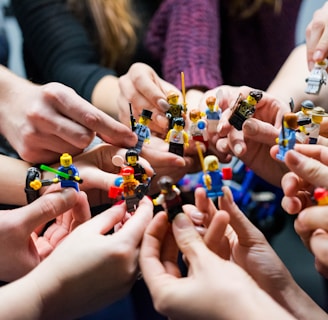Stage 2: Launch – Building Commitment
In this stage, the implementation process begins. The focus is on building commitment among team members, overcoming initial doubts, and ensuring that planned actions are carried out consistently. Leaders must promote a sense of urgency and action, showing team members how their efforts contribute directly to achieving the established objectives. According to McChesney, Covey, and Huling (2012), successful execution requires a disciplined focus on what matters most. Similarly, the Influencer Model (Patterson et al., 2013) highlights the importance of activating personal and social motivation to create sustained behavioral change. This step involves identifying and applying lead measures, predictive, controllable actions that guide progress toward the Wildly Important Goal (WIG) effectively and measurably.
What to Expect:
Once the team understands the Wildly Important Goal (WIG) and the purpose behind the change, it is time to begin implementation. Although commitment begins to grow at this stage, doubts may still arise regarding how the change will occur in practice. Teachers may feel uncertain about the process or concerned about the new methodologies and technologies they will be expected to integrate into their instruction.
Educational leaders must promote a supportive environment with ongoing training, ensuring all team members feel confident and equipped. Some may feel overwhelmed by the need to use new tools without prior experience, so continuous professional development and guided practice should be provided to reduce resistance and ease the transition into new instructional approaches.



Discipline 2 – Act on the Lead Measures
Key Action: Identify and Act on Lead Measures
Identifying and acting on lead measures is essential to ensure daily actions align with the WIG (Wildly Important Goal). These measures must be achievable and measurable to monitor progress and make timely adjustments. Lead measures are specific, actionable tasks that must be carried out consistently and directly impact advancing toward the WIG.
Application within the Innovation Plan:
Action 1: Interactive Literacy Stations
Teachers will implement structured literacy stations with guided reading, creative writing, and reading comprehension activities. These sessions will be held thrice weekly for 30 minutes each, allowing students to work at their own pace and according to their needs.
Measurement Proposal: Students will complete at least one daily activity focused on reading or writing. Teachers will monitor progress through weekly performance reports.
Measurable Objective: Each student will engage in at least 30 minutes of guided reading and creative writing per week. At least 80% of students will participate actively in these activities.

Action 2: Use of Adaptive Digital Platforms
Digital tools will be implemented to provide adaptive learning experiences in reading. Students must access these platforms regularly to reinforce their comprehension and writing skills.
Measurement Proposal: Students will complete a minimum of three sessions per week on the adaptive platforms. Weekly reports will be reviewed to evaluate performance and inform instructional adjustments.
Measurable Objective: Students will participate in at least three weekly digital reading sessions. Progress will be tracked weekly based on their reading comprehension and writing task performance.
Influencer Model Action: Key Action: Develop Skills Through Ongoing Training and Provide Social Support
Develop Skills Through Continuous Professional Development
The Influencer Model emphasizes that successful change depends on technical, social, and behavioral skills. At this stage, the team must feel equipped and confident in implementing change and applying new strategies in their daily teaching practices. Training teachers in using adaptive digital tools and innovative instructional methodologies is essential for ensuring the change is effective and sustainable.
How will it be implemented?
Hands-on training sessions:
Organize ongoing workshops focused on using platforms. Teachers will learn to integrate these digital tools into reading and writing instruction effectively.
Literacy strategies training:
Provide targeted training in pedagogical strategies to implement interactive literacy stations, including guided reading, creative writing, and reading comprehension activities.
Ongoing evaluation and reflection:
After each training session, teachers will be asked to complete a self-assessment or participate in group reflection to evaluate what they’ve learned and how they plan to apply it in the classroom. These evaluations will help measure teacher confidence in using new tools and highlight areas where further support may be needed.

Provide Social Support Within the Educational Team
Social support is essential for maintaining high morale and ensuring that change is not seen as an individual burden but as a shared team effort. Teachers must feel supported by their colleagues to overcome challenges together and remain committed to the process.
How will it be implemented?
Create collaborative spaces:
Organize regular meetings where teachers can share their experiences with new tools and methodologies, discuss common challenges, and exchange practical solutions. These meetings should also include time for reflection on progress and collective adjustments to instructional practices.
Promote positive feedback:
Change leaders within the team will facilitate feedback sessions that recognize successful efforts and reinforce best practices. Additionally, they will support teachers facing implementation challenges by offering tailored strategies and encouragement.
Establish peer mentorship:
Launch a mentorship system where experienced teachers support those newer to using digital tools and implementing interactive literacy stations. This initiative will help strengthen team relationships and ensure continuous sharing of knowledge and effective teaching practices.
